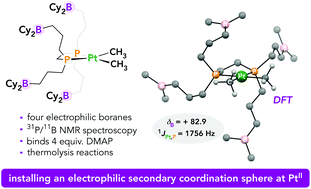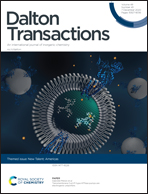Platinum complexes of a boron-rich diphosphine ligand†
Abstract
Herein, we describe the preparation, characterization, and reactivity of two PtII bis-hydrocarbyl complexes containing the 1,2-bis(di(3-dicyclohexylboraneyl)propylphosphino)ethane (P2BCy4) ligand. These scaffolds are readily accessed from four-fold hydroboration of 1,2-bis(diallylphosphino)ethane PtII precursors. The electrophilcity of such frameworks is showcased by facile coordination of the strong Lewis base, 4-N,N-dimethylaminopyridine (DMAP). Thermolysis reactions of [Pt(P2BCy4)(R)2] (R = CH3 or Ph) show enhanced (and divergent) reactivity when compared to their “all-alkyl” diphosphine counterparts, implicating involvement of the pendant borane groups. This behaviour is attenuated by protection of these units with DMAP.

- This article is part of the themed collection: New Talent: Americas


 Please wait while we load your content...
Please wait while we load your content...